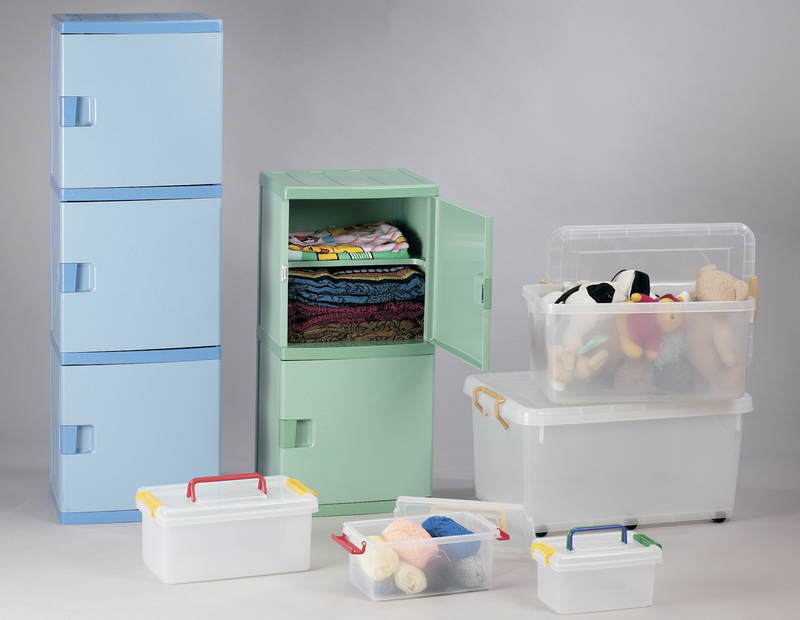Step-by-Step Guide to Packing for Moving House
Posted on 28/05/2025
Step-by-Step Guide to Packing for Moving House
Moving to a new home is an exciting milestone, but packing for moving house can often feel overwhelming. From organizing belongings to labeling boxes, there are a lot of tasks that require careful planning and execution. A well-structured approach will not only make the process more manageable but also help ensure a smoother, stress-free transition. In this comprehensive article, you'll find a step-by-step guide full of tips, tricks, and smart packing strategies designed to help you pack efficiently and safely for your new adventure.
Why Efficient Packing Matters
Many homeowners underestimate the amount of time and effort required to prepare for a move. Packing efficiently preserves your valuables, saves time during unpacking, and minimizes the chances of damage during transit. Whether you're moving down the street or across the country, following a proven house moving packing checklist will help prevent last-minute chaos.

Step 1: Start Planning Early
It's never too early to start planning your move. Ideally, begin organizing and packing for a move at least 4-6 weeks before your move-out date. An early start ensures that you won't be rushed, overlooks will be avoided, and your essentials will be right where you need them on moving day.
Make a Moving Checklist
- Create an inventory of everything you own
- Identify items to donate, sell, or discard
- Schedule utility shut-offs and address changes
- Assign deadlines for each packing step
Step 2: Gather Quality Packing Supplies
Before you begin the packing process for moving house, assemble all necessary packing materials. Quality supplies will help protect your belongings and keep the process organized.
Packing Materials Checklist
- Sturdy moving boxes (a variety of sizes)
- Packing tape and dispensers
- Bubble wrap and packing paper
- Stretch wrap for furniture
- Permanent markers and color-coded labels
- Plastic bags for small hardware or screws
- Scissors or box cutters
Pro Packing Tip: If possible, source free or low-cost boxes from local stores, but double-check their structural integrity to avoid box collapses during the move.
Step 3: Declutter Before You Pack
One of the most crucial house packing tips before moving is to declutter. There's no point in moving things you no longer need or use! Decluttering reduces moving costs and the overall volume of boxes you'll need to handle.
How to Declutter Efficiently
- Sort possessions into keep, donate, sell, and discard categories
- Hold a garage sale or use online marketplaces
- Donate gently-used items to local charities
- Properly dispose of or recycle unusable items
- Use a decluttering rule: If you haven't used it in over a year, let it go!
Step 4: Pack by Room & Category
A room-by-room approach is among the most organized ways to pack for a move. Packing similar items together and labeling each box with its destination room makes unpacking vastly easier.
Packing Strategy: Room-by-Room
- Start with rooms least used first, like the attic, garage, or guest room.
- Pack up seasonal items and decor early.
- Tackle kitchens and bathrooms next--leave out only daily essentials.
- Finish with bedrooms and living spaces in the final week.
Don't Mix Items from Different Rooms
To stay organized, avoid mixing items from different rooms in a single box. This will make reassembling your home in the new place much easier and faster.
Step 5: Label and Create a Box Inventory
Labeling is a cornerstone of packing for moving houses. Without it, you'll be left guessing at your destination, resulting in wasted time and confusion.
How to Label Moving Boxes Effectively
- Write the room name and general contents on each box
- Use color-coded stickers or tape for quick visual sorting
- Number each box and maintain a master inventory list
- Mark boxes with fragile items and those that are "open first"
Step 6: Protect Fragile and Valuable Items
Protecting fragile items such as glassware, artwork, and electronics is critical when packing to move house safely.
Packing Techniques for Breakables
- Wrap dishes, glasses, and ceramics individually in bubble wrap or packing paper
- Fill empty spaces in boxes with crumpled paper or soft items like linens
- Pack plates vertically for added strength
- Box electronics in original packaging if available, and cushion them with towels or foam
- Consider double-boxing particularly valuable items
- Label these boxes boldly as "FRAGILE" on all sides
Step 7: Pack Essentials Separately
Your move-in day survival kit should contain everything you'll need right away at your new home. This bag or box should be packed last and loaded onto the moving truck last, so you can access it first.
Essentials Box Suggestions
- Change of clothes, toiletries, and medications
- Phone chargers and essential electronics
- Snacks, water, and basic kitchen tools (like a coffee maker!)
- Important documents and a first aid kit
- Bedding, towels, and basic cleaning supplies
- Toilet paper and a few favorite personal items for comfort
Step 8: Disassemble Furniture and Large Items
Oversized furniture and appliances often need to be disassembled for transport. This step in house moving packing prevents damage and helps maximize storage space in the moving truck.
Tips for Disassembling Furniture
- Take photos before taking items apart for reference during reassembly
- Keep screws and hardware in clearly labeled bags, and tape them to the corresponding item
- Wrap furniture components in moving blankets or stretch wrap
- Remove shelves and glass panels
- If possible, enlist help to maneuver heavy or bulky pieces
Step 9: Confirm Moving Logistics
A well-coordinated move minimizes stress on the big day. Ensure that all logistics, from timing to access, are taken care of.
Pre-Move Checklist
- Confirm your moving date with the moving company
- Reserve elevators and parking if moving from an apartment or condo
- Arrange for childcare or pet-sitting as needed
- Double-check travel arrangements to your new location
Step 10: Final Sweep and Walk-Through
With every box packed and labeled, it's time for a final check.
Things to Do Before Leaving Your Old Home
- Walk through each room, closet, and cabinet for left-behind items
- Defrost and clean out the refrigerator and freezer
- Double-check utility shut-off dates
- Sweep and lightly clean as a courtesy to the next owners or tenants
- Take meter readings if necessary
Packing for Special Items
Some household goods require specialized packing to ensure they're moved safely.
Specialty Packing Tips
- Artwork & Mirrors: Use mirror boxes and plenty of padding; transport upright.
- House Plants: Place in open containers so they can breathe; avoid watering right before moving.
- Computers & Electronics: Back up data, wrap carefully, and label cords individually.
- Antiques & Heirlooms: Take photos for insurance purposes and use extra protection.
What Not to Pack When Moving
There are certain items you should never place on a moving truck. Some are restricted by law, while others may be best kept with you for peace of mind.
Do Not Pack List
- Hazardous materials (paint, propane, gasoline, fireworks, etc.)
- Perishable foods
- Valuable jewelry, cash, and important documents (carry these yourself)
- Personal identification and sentimental items
- Pets and live animals

Additional Expert Tips for Packing to Move House
- Pace yourself! Spread out the work to avoid burnout.
- Enlist friends or family for support with heavy or tricky items
- Take breaks and stay hydrated during intense packing sessions
- Consider professional packing services for fragile or valuable possessions
- If space allows, stage packed boxes in a garage or unused room in advance
- Keep cleaning supplies accessible for a final clean-up
Conclusion: Make Packing for Moving House Simple and Stress-Free
Packing for a house move doesn't have to be daunting. With early planning, quality supplies, and a step-by-step strategy, you can streamline your relocation and protect your belongings. By following this step-by-step guide, your move will be organized, efficient, and as stress-free as possible.
Remember, packing to move house is a chance to declutter and start fresh. Stay positive, give yourself plenty of time, and take pride in each milestone completed. Soon, you'll be enjoying your new home, surrounded by your well-packed treasures!
If you found this guide helpful, share it with others planning a move, and best of luck on your house moving journey!



 Guide price for the hire of a Transit Van /up to 300 cu ft/.
Guide price for the hire of a Transit Van /up to 300 cu ft/.